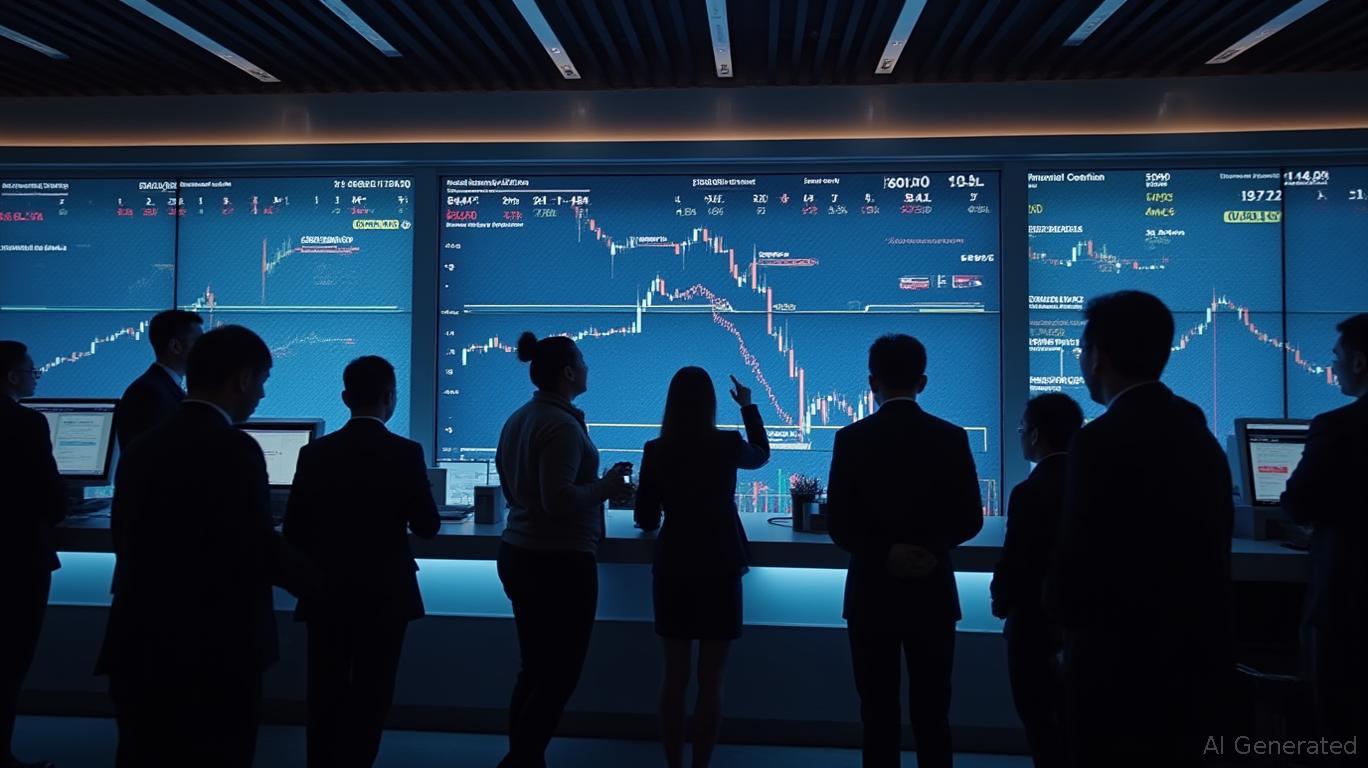CIBC's Q2 Surge: Sustainable Growth or Overvalued Optimism?
CIBC's Q2 2025 results have ignited a heated debate among investors: Is the bank's 17% net income growth a sign of enduring strength, or does it mask vulnerabilities lurking beneath the surface? With
Capital hiking its price target to $102 while GuruFocus warns of a 20% downside, the question of whether CIBC's stock price reflects sustainable momentum or overexuberance is critical for long-term investors. Let's dissect the numbers.The Bull Case: A Multi-Faceted Growth Machine

CIBC's Q2 performance is undeniably robust. Net income rose to $2 billion (up 17% YoY), driven by cross-segment strength:
- Capital Markets saw a 20% jump in net income, fueled by soaring trading and underwriting revenue.
- U.S. Commercial & Wealth Management surged 81% in net income, benefiting from fee-based growth and higher loan volumes.
- ROE improved to 13.9%, a 50-basis-point gain over 2024, signaling operational efficiency.
The bank's CET1 ratio of 13.4% and 131% liquidity coverage ratio underscore its fortress-like capital position. Strategic investments—such as AI initiatives saving 200,000 hours—bolster the argument for long-term scalability. BMO's price target hike reflects confidence in these fundamentals, while CIBC's Imperial Service NPS of 得罪74.7 highlights client loyalty, a rare advantage in competitive banking.
The Bear Case: Risks in Plain Sight
Despite the positives, cracks emerge in CIBC's narrative. Provisions for credit losses (PCL) jumped 18% to $605 million, reflecting cautious assumptions about an uncertain economy. While credit quality remains strong, macro headwinds—trade policy disputes, softening real estate markets—could strain these buffers.
Margin pressures are another red flag:
- U.S. net interest margin dipped 6 basis points, and transaction-related fees fell 15%, signaling vulnerability to declining consumer spending.
- Expenses rose 6%, eroding profitability despite revenue growth.
GuruFocus' bearish valuation—pricing CIBC at $56.92 in one year—highlights skepticism. Its P/E ratio of 11.76, while within historical norms, suggests the market may already be pricing in near-term risks.
The Middle Ground: A Strategic Hold with Caution
The battle between BMO's optimism and GuruFocus' pessimism hinges on two critical factors:
1. Digital Transformation Payoff: CIBC's AI investments and Imperial Bank's service excellence could cement its leadership in client-centric banking. If these initiatives drive sustained cost savings and revenue, the $102 target becomes achievable.
2. Macro Resilience: The bank's diversified portfolio—balanced commercial real estate exposure, strong wealth management—offers some insulation against sector-specific downturns. However, a prolonged economic slowdown could test its credit assumptions.
Investment Thesis: Hold for the Long Game, But Watch the Horizon
CIBC's Q2 results are a buy signal for patient investors. Its cross-segment growth, capital strength, and tech-driven efficiency gains position it to outperform peers over 3–5 years. BMO's price target reflects this confidence, and the 13.9% ROE is a clear win in a low-interest-rate environment.
However, a historical review of earnings-driven strategies raises red flags. Historically, such a strategy has underperformed, yielding a total return of -14.75% during that period, with a maximum drawdown of -42.57%. This underscores the need for disciplined risk management.
Investors should:
- Monitor U.S. commercial loan growth (currently muted) and fee income trends.
- Track PCL dynamics as recession risks rise.
- Consider a collar strategy (long stock + put options) to hedge downside.
Final Verdict
CIBC's Q2 results are a vindication of its strategic bets, but the path to $102 is not without potholes. For those willing to overlook near-term volatility, CIBC remains a compelling buy-and-hold candidate. The stock's current yield of 3.8% and shareholder-friendly buybacks (6 million shares in Q2) add further allure.
Investors must weigh the 20% downside risk (per GuruFocus) against the potential upside of a bank nimbly adapting to digitization. In a sector starved for growth, CIBC's performance is a rare bright spot—but don't lose sight of the storm clouds on the radar.
Act now, but stay vigilant.

Comments
No comments yet